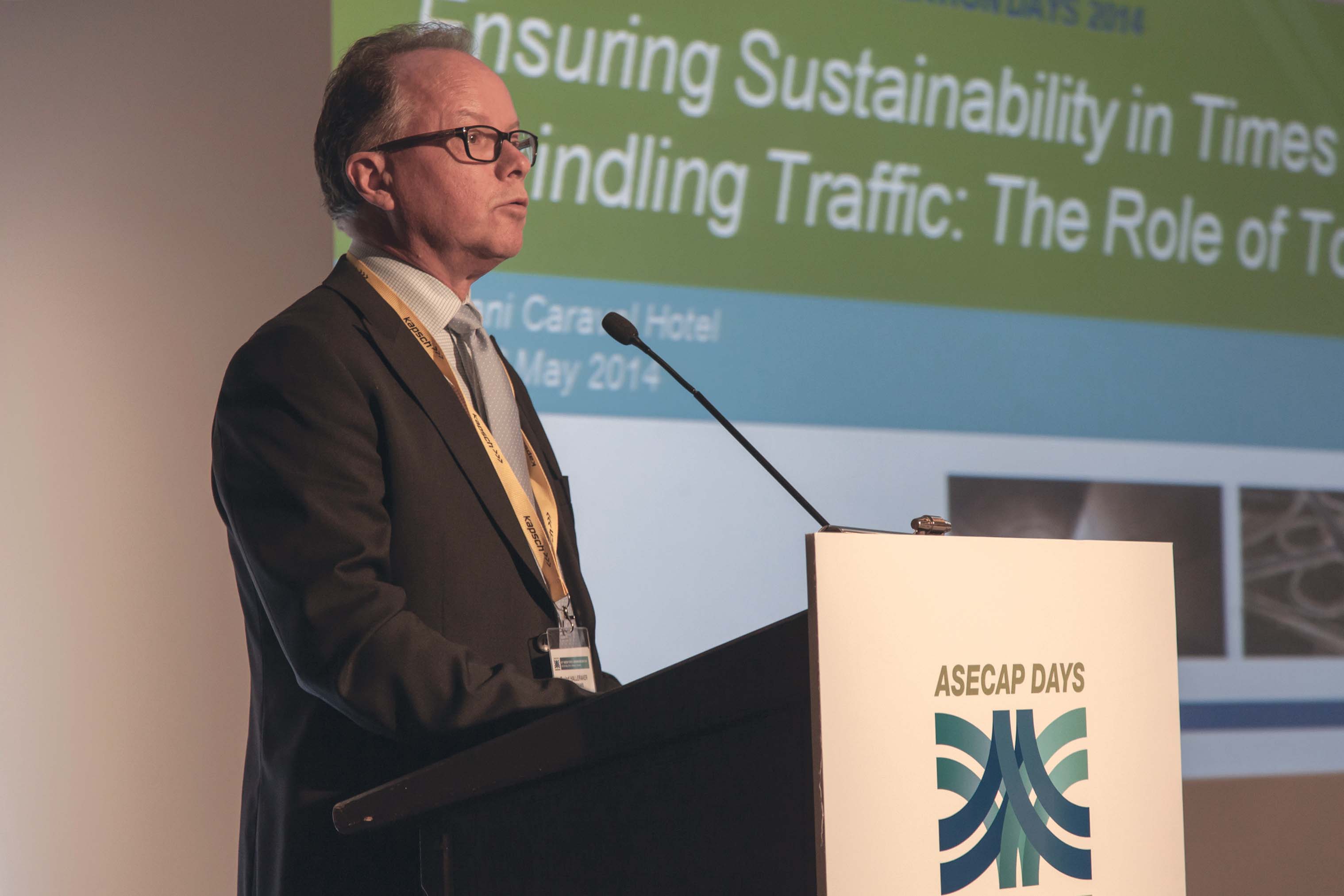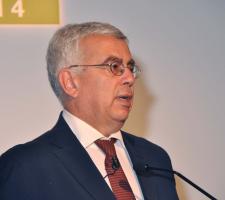
This year
Delegates not only got a front seat view of the Acropolis – one of the world’s greatest heritage sites - they also had a first-hand report of the country’s difficulties from Stratos Simopoulos, secretary general at Greece’s Public Works Ministry. In 2007 the Greek government signed five concession contracts for the building, operating and maintenance of 750km of motorways. However, in 2010, during the construction phase, the economic crisis that impacted many countries caused a 25% reduction in Greece’s GDP and led to the forecast of toll revenues on the new roads being more than halved, meaning the projects were no longer viable.
By 2011 construction had ceased and the banks had withdrawn funding from four of the concessions. It then took two years of negotiations before construction work restarted. The roads are now scheduled to open in 2015/16. Similar scenarios were seen in Spain where eight tolling concessions went into bankruptcy, Bruno de la Fuente Bitaine of SEOPAN (the association for Spanish construction companies) told delegates.
In such a downturn even the operators of Greece’s existing toll roads had difficulties as Simopoulos said some drivers refused to pay the tolls and used service roads to avoid the plazas. While this exacerbated the shortfall in tolling revenue, the minister added: “Tolling companies could not raise the rates due to social reaction.”
Going forward, he added that the emphasis will be to inform users of the on-going investment the concessionaires make in the maintenance of the roadways and their commitment to providing comfortable, safe and speedy transport.
This comment dovetailed well with one of the conferences key messages: to market the benefits of toll concessions to drivers, authorities and the incoming politicians and commissioners in the EU Commission.
With the help of ASECAP’s incoming president Øyvind Halleraker (a Norwegian politician who represents Norvegfinans) the association is planning an open event in Brussels - possibly in the Parliament building. The event is planned for this November and its aim is to inform the latest intake of MEPs and EU commissioners about the advantages of tolling concessions in the construction and management of new roads.
The importance of a company’s public image was demonstrated by Zofia Kwiatkowska from Polish toll operator Autostrada Wielkopolska which runs the first-ever infrastructure PPP and the country’s first toll road. As such it remains a politically and socially sensitive project.
Kwiatkowska explained how the company put in place a system to positively reinforce the scheme’s wider benefits and increase credibility with the public.
She highlighted in particular the company’s social media activities which are divided into three areas: promotion regions along the 255km A2/E30 toll motorway, driver safety and sharing good practice. In the first category social media was used to help local businesses maximise opportunities during the Euro 2012 football tournament (co-hosted by Poland) as well as helping supporters with their travel plans. Safety messages have included some rather graphic cartoon strips and student competitions have been introduced to increase knowledge about the motorway and its benefits to the younger generation.
Luis D’Eça Pinheiro from Brisa Auto-Estradas, the Portuguese-based toll concessionaire, continued the public opinion theme in his presentation which looked at digital information and online reputations. He highlighted the public’s diminishing trust in corporate bodies following the Enron scandal and the behaviour of banks in the run-up to the global financial crisis. Conversely, he said members of the public are placing ever-greater trust in the word of complete strangers on peer-to-peer websites such as Tripadvisor and increasingly bad reviews on such sites can have a negative effect on a business. His message was that tolling companies should not only keep a watching brief on what was being said about them online but to also proactively contribute to online discussions.
In the transportation sector he said modern travellers are increasingly demanding more information and that in many cases the control rooms have a large quantity of real-time information but often this is not passed on to travellers. “We all have a lot of information in our control centres and Brisa’s strategy is very simple – to share with people all the information we have. We have a voice app so that while you are travelling you can hear all the information and don’t need to look at the device.”
Such thinking has also shaped the introduction of the company’s new ViaVerde app. This allows registered users to manage their own account, check their bills and divide the tolls between work and private use, as well as receiving alerts and contacting the customer service centre.
Even more worryingly, a third of drivers don’t obey the speed limit and a quarter drive too close to the vehicle in front.
Following the survey, and just before the holiday season, Sanef launched a driver awareness campaign about driving too close to the vehicle in front. This included local and national newspapers and magazines and was backed up by displays on 4x3 grids and the company’s website. When the survey was repeated in 2013, the proportion of vehicles travelling too close had fallen to 18% while the results for the other risk factors remain unchanged.
Autostrada del Brennero manages Italy’s A22 motorway and the company’s Dr Christina Ebli described how a 9km section of the two-lane/direction motorway has been instrumented as one of seven test sites for the EU’s Drive C2X project. Five roadside ITS stations have been installed and use the 5.9GHz wavelength and 802.11 protocol Ethernet to transfer information to, from and between 10 cooperative test vehicles. These vehicles are fitted with GPS, a universal mobile telecommunications system and a Linux-based communications control unit linked to a Windows-based device which taps into the vehicle’s CAN system and runs an in-vehicle display.
Each roadside unit is equipped with directional antennas as well as traffic and weather sensors and is linked to the operations room via fibre optic cable. One unit positioned near a fuel station is fitted with a wrong way driving sensor.
Beyond normal traffic data, the C2X system is able to provide the test cars with warnings for approaching emergency vehicles, motorcycle proximity, car breakdown and wrong way drivers as well as slow vehicles, traffic jams and roadworks ahead.
Ebli: “There is no doubt about the potential benefits of the C2X communications. On the safety side the system is expected to provide a ‘telematic horizon’ with vehicle sensors allowing drivers to ‘see’ further ahead.”
Returning to the conference’s dwindling traffic theme was Emanuela Stocchi from Aiscat, the Italian tolling association which has 27 members who collectively operate 5,800km of tolled road throughout Italy. She outlined an agreement it had reached with the Italian government which wanted to stimulate the economy by discounting tolls for regular commuters between February 2014 to the end of 2015.
The stepped discounts were restricted to registered motorists for two trips per day of less than 50km on the tolled roadways and started with a 1% discount for the 21st trip, 2% for the 22nd and so on up to a maximum of 20%. As the concessionaires suffered the loss of revenue a compensation system is currently under discussion with the government. One potential solution involves the reunification of the tolled and un-tolled motorway sections.
“Whatever solution we choose we have to be sure it is compliant with the European legislation,” she said, adding that she hoped member states would adopt the new 23/2014 directive quickly and homogeneously.















